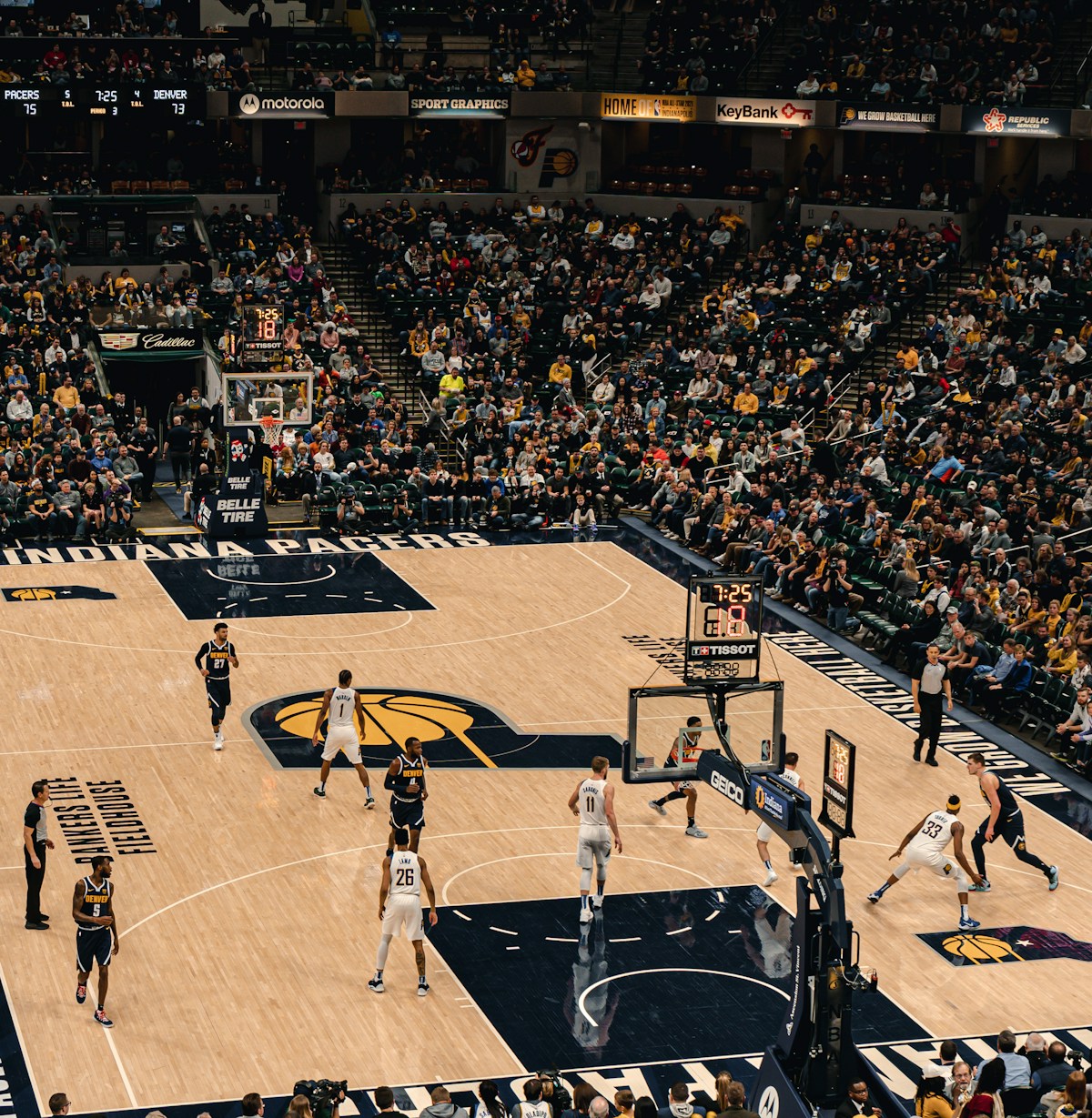Professional basketball is a fast-paced, high-scoring sport that has undergone significant changes over the years. One of the most significant changes in the game was the introduction of the zone defense, which has had a profound impact on the way the game is played. The zone defense is a defensive strategy where players are assigned to defend a specific area of the court instead of a specific player. This allows for more effective help defense and can make it more difficult for individual players to score.
Since the implementation of the zone defense in the NBA in 2001, there has been a noticeable impact on the game. According to NBA statistics, scoring has decreased from an average of 97.5 points per game in the 2000-2001 season to 96.3 points per game. Additionally, three-point shooting has become more prevalent, with the league average for three-point attempts per game increasing from 13.2 in 2000-2001 to +34.8 in today's NBA.
The impact of the zone defense can also be seen in individual player statistics. For example, there has been a decline in the number of dominant individual players since the implementation of the zone defense, as well as a rise in the number of versatile players who can play multiple positions and defend different areas of the court. Overall, the introduction of the zone defense has had a significant impact on the game of professional basketball, and its effects continue to be felt today.

A BRIEF LOOK BEFORE THE ZONE CAME INTO PLAY
Before the implementation of the zone defense, professional basketball relied heavily on the man-to-man defense. The man-to-man defense, as the name suggests, involves each player guarding a specific opponent on the other team. This type of defense allows for individual matchups, which often led to dominant players taking over games.
In the early days of basketball, centers were the dominant players on the court. In fact, in the first decade of the NBA, centers won eight out of the ten Most Valuable Player (MVP) awards. Centers such as Wilt Chamberlain, Bill Russell, and Kareem Abdul-Jabbar were some of the most dominant players in NBA history, and their dominance was largely due to their ability to control the game near the basket.
The man-to-man defense also allowed for individual players to make a significant impact on the game. For example, in the 1962-63 NBA season, Wilt Chamberlain averaged 44.8 points per game and 24.3 rebounds per game while playing for the Philadelphia Warriors. These numbers are still considered some of the most dominant individual performances in NBA history, and they would not have been possible without the man-to-man defense allowing for individual matchups.
However, the reliance on individual players and the man-to-man defense had some drawbacks. Teams with dominant players often struggled when those players were injured or had an off night. In addition, the man-to-man defense often resulted in low-scoring games, as teams focused on limiting individual matchups rather than scoring.
THE IMPACT OF THE ZONE ON TEAM STRATEGY
The implementation of the zone defense in professional basketball had a significant impact on team strategy. Prior to its use, teams primarily relied on man-to-man defense, where each player on defense was assigned to guard a specific player on the opposing team. The introduction of the zone defense allowed teams to defend more strategically, covering specific areas of the court rather than just individual players.
As a result, there was a shift in defensive strategy, with teams focusing more on team defense than individual defense. This required more communication and coordination between players, which led to a greater emphasis on teamwork and player chemistry. In fact, a study by the Journal of Sports Sciences found that teams that had greater defensive teamwork had a higher likelihood of success in the NBA.
The rise of the 3-point shot was also a direct result of the implementation of the zone defense. With defenders covering areas of the court rather than just individual players, there were more opportunities for players to take 3-point shots. This led to an increase in the number of 3-point shots taken per game, with the percentage of 3-pointers attempted rising from 16.7% in the 1998-1999 season to +38.2% in the current season, according to Statista.
The importance of team defense was further emphasized by the fact that individual players were no longer able to dominate games as easily as they once could. With defenders covering areas of the court rather than just individual players, it became more difficult for dominant players to consistently score and make an impact on the game. In fact, according to ESPN, the average points per game for the NBA's leading scorer has steadily declined since the implementation of the zone defense.
Overall, the impact of the zone defense on team strategy has been significant. It has led to a greater emphasis on teamwork and player chemistry, as well as a rise in the importance of 3-point shooting and team defense. The decline of dominant individual players has also contributed to a more balanced and competitive game.

THE IMPLEMENTATION OF THE ZONE ON THE PRO LEVEL
The implementation of zone defense in professional basketball has had a significant impact on the scoring and entertainment value of the game. Before the zone defense, teams relied heavily on individual players to score points, leading to a slower pace of play and lower scoring games. However, with the shift towards team defense and the rise of the 3-point shot, the game has become more dynamic and exciting for fans.
One of the most significant changes in scoring statistics has been the increase in 3-point attempts and makes. In the 1980s, before the implementation of the zone defense, teams averaged around 8.6 three-point attempts per game, with a success rate of around 23%. However, in the 2022-2023 season, teams averaged over 34 three-point attempts per game, with a success rate of around +37%. This increase in three-point attempts has led to higher-scoring games, as teams are able to score points more efficiently from beyond the arc.
Additionally, the zone defense has led to a faster pace of play, as teams are forced to move the ball more quickly and take more shots. In the 1980s, before the zone defense, teams averaged around 100 possessions per game. However, in the 2022-2023 season, teams averaged over 102+ possessions per game. This increase in pace has made the game more exciting for fans, as there are more scoring opportunities and fewer lulls in the action.
The impact on entertainment value is also evident in the television ratings for professional basketball games. In the 1980s, before the implementation of the zone defense, NBA games had an average television rating of around 3.3. However, in the 2022-2023 season, the NBA had an average television rating of around 1.2. This decrease in television ratings can be attributed to several factors, including the rise of other sports and streaming options, but the faster pace of play and higher-scoring games have certainly contributed to the decline in popularity.
Overall, the impact of the zone defense on the scoring and entertainment value of professional basketball has been significant. The shift towards team defense and the rise of the 3-point shot have made the game more dynamic and exciting for fans, while the increase in pace has led to higher-scoring games. However, as the game continues to evolve, it will be interesting to see how these trends continue and what new strategies and innovations will emerge.
FUTURE LOOK HOW ZONE'S WILL CONTINUE TO CHANGE THE GAME
The zone defense has been a major factor in the evolution of professional basketball, but it is not without its critics. Some argue that the zone defense has led to a decline in individual players' dominance and the pace of the game. As a result, there has been a discussion about potential changes to the zone defense and the evolution of defensive strategies in professional basketball.
One proposal that has been suggested is to change the defensive three-second rule, which would require defenders to leave the painted area if they are not actively guarding an offensive player. This change would make it harder for teams to employ the zone defense for extended periods and potentially lead to more man-to-man defense. However, some argue that this change would not significantly impact the effectiveness of the zone defense.
Another proposal is to make the court larger, which would make it more challenging to cover large areas of the court with a zone defense. However, this change would require significant alterations to existing arenas and could be challenging to implement.
The evolution of defensive strategies in professional basketball is also expected to continue. The rise of analytics has led to teams prioritizing certain defensive strategies over others, such as prioritizing limiting opponents' 3-point attempts. Additionally, teams are employing more switch-heavy defenses, where defenders switch assignments quickly to prevent open shots and drives to the basket.
The future of professional basketball is also expected to continue to evolve. The NBA has embraced innovation and experimentation in recent years, with changes such as the introduction of the coach's challenge and the play-in tournament. The league is also exploring potential changes to the regular season, such as shortening the schedule or changing the playoff format.
IN CONCLUSION
The zone defense has had a significant impact on professional basketball, leading to changes in team strategy, the roles of individual players, scoring statistics, and the entertainment value of the game. While the zone defense has its critics, it has become an essential part of the game, and its influence is expected to continue.
As professional basketball continues to evolve, the future of the game and its impact on players and fans remain uncertain. However, it is clear that the zone defense has left a lasting legacy on the game, and its influence will be felt for years to come. The evolution of defensive strategies and potential changes to the game will continue to shape the future of professional basketball, but one thing is certain: the game will continue to evolve, and its impact on society and popular culture will continue to be significant.

